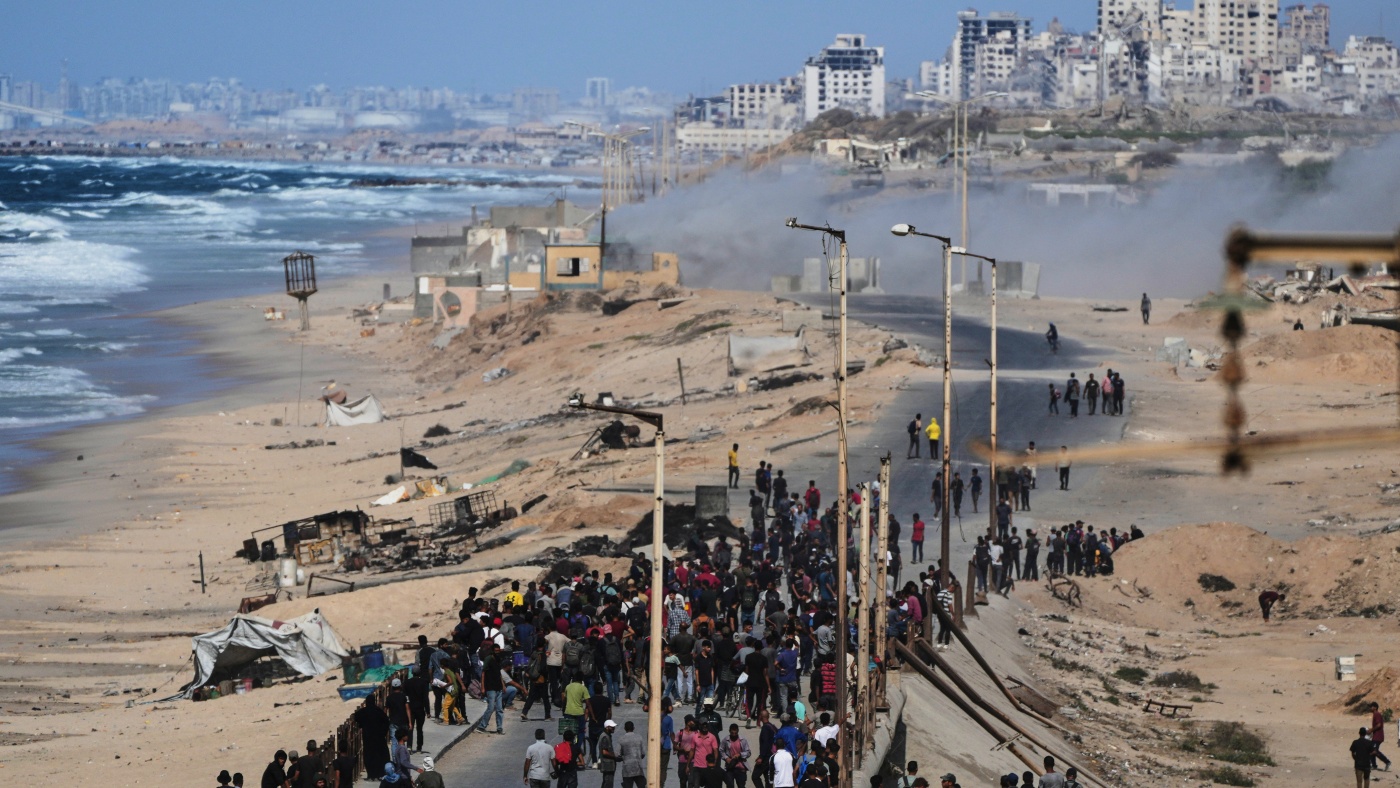Gaza Ceasefire Takes Effect: Hostage Releases, Partial Withdrawal, and Aid Surge Kick Off Phase One
The Gaza ceasefire, agreed upon on October 9, 2025, as part of a U.S.-brokered 20-point peace plan unveiled by President Donald Trump, is set to go into effect within 72 hours—likely by October 12. This marks the first major de-escalation in the two-year Israel-Hamas war, but experts caution it’s a fragile first step, not a full resolution. Immediate actions focus on halting hostilities and humanitarian relief, with broader negotiations looming.
Immediate Implementation: Phase One Unfolds
Once the ceasefire activates, fighting between Israeli forces and Hamas will cease across Gaza, enforced by an implementation mechanism agreed upon by mediators including Qatar and the U.S. The Israeli Defense Forces (IDF) will begin a partial withdrawal to an “agreed-upon line,” though specifics on the exact positioning—potentially leaving a buffer zone—remain vague and could spark early tensions.
Hamas has committed to releasing all remaining 48 Israeli hostages within 72 hours of the ceasefire starting, with the 20 believed to be alive prioritized first. In exchange, Israel will free hundreds of Palestinian prisoners, starting with those held under administrative detention. The International Committee of the Red Cross will oversee the swaps at designated crossing points like Kerem Shalom.
A massive influx of humanitarian aid—food, medicine, and fuel—will flood Gaza immediately, coordinated by the United Nations and Arab partners to address the acute crisis affecting 2.3 million residents. This phase is designed to last several weeks, providing a “respite” while building trust, but it excludes the 28 bodies of deceased hostages, which may be addressed later.
Negotiations Ramp Up: Toward Phases Two and Beyond
With Phase One underway, talks mediated by the U.S., Qatar, and Egypt will shift to subsequent phases, aiming for a permanent end to hostilities. Key goals include full IDF withdrawal from Gaza, demilitarization of the territory, and the dismantlement of Hamas’s military infrastructure, such as tunnels and weapons facilities, monitored by independent international observers.
Transitional governance for Gaza would transition to Palestinian technocrats, sidelining Hamas’s political role, with oversight from figures like former British Prime Minister Tony Blair and Trump as “chairman of the Board of Peace.” An International Stabilization Force, comprising Arab states and global partners, could deploy to maintain security and facilitate reconstruction, estimated at over $50 billion. Longer-term, the deal envisions a pathway to Palestinian statehood, though it omits details on the West Bank or broader Israeli-Palestinian talks.
Challenges and Potential Roadblocks
Implementation hinges on compliance: Hamas must fully disarm over time, a non-starter for the group without ironclad guarantees, while Israel seeks benchmarks to prevent rearmament. Past ceasefires, like the one in November 2023, collapsed amid mutual accusations, raising fears of a repeat if aid distribution falters or spoilers emerge. Gulf states have signaled reluctance to fund rebuilding without a durable peace, complicating Phase Two funding.
Public reactions mix cautious optimism with skepticism. Israeli hostage families hailed the deal as a “lifeline,” while Palestinian advocates warned it falls short on justice. On X, #GazaCeasefire trended with over 100,000 posts, blending celebrations from Tel Aviv vigils to Gaza street gatherings, though hardliners on both sides decried concessions.
For U.S. audiences, this ceasefire’s ripple effects touch foreign policy and domestic debates. With $3.8 billion in annual aid to Israel at stake, success could ease congressional divides and boost Trump’s legacy as a dealmaker. Economically, stabilized oil flows from the region might trim gas prices by 5-10 cents per gallon, per energy analysts. Technologically, it opens doors for U.S. firms in Gaza’s reconstruction, from solar grids to AI-monitored borders.
User intent here leans toward clarity amid chaos: Americans searching “Gaza ceasefire timeline” seek phased breakdowns for family discussions or news digests, while policymakers track “post-ceasefire Gaza governance” for aid allocations. Trump’s team, leveraging Qatar’s mediation, prioritizes quick wins like aid surges to build momentum, but experts urge U.S. leverage on Netanyahu to nail down disarmament details.
In summary, the ceasefire’s activation heralds hostage freedoms and aid flows in Phase One, paving a rocky road to demilitarization and statehood talks in later stages. If it holds, Gaza could see reconstruction by 2026; if not, hostilities risk reigniting by year’s end— a high-stakes gamble on fragile trust.
